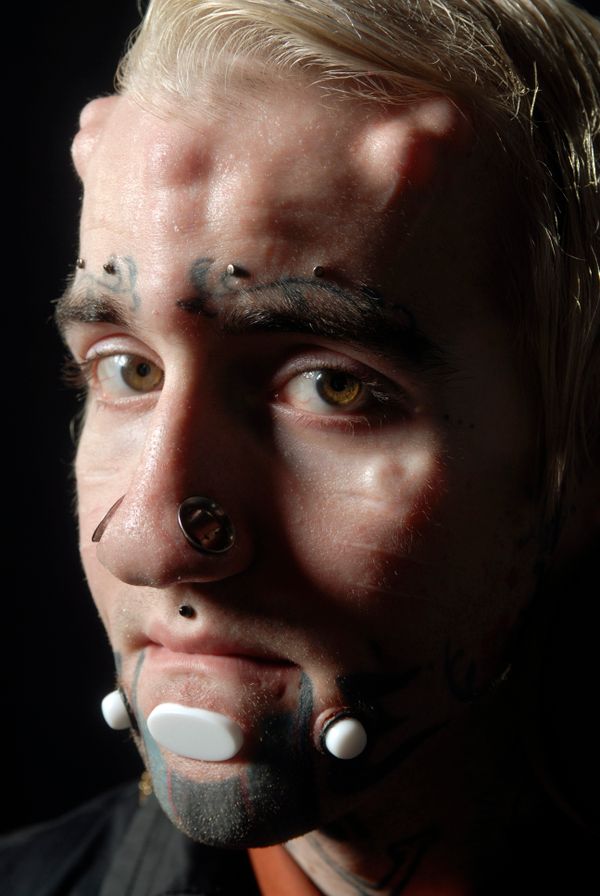
Tattoos have become so commonplace, so practically passé, that to be considered truly edgy these days, you have to really ink up.
That dolphin on your calf? The rose on your shoulder blade? That tough-looking barbed wire around your biceps?
Advertisement
Come on. Nobody's going to buy that you're some badass if that's all you got.
"One or two tattoos really aren't a whole lot different than changing your hairstyle," says Jerry Koch, a sociologist at Texas Tech who has built a career out of, among other specialties, studying body art. "After the fourth or fifth one or so — you're talking about people that are aficionados or collectors, and really have the body art as a constitutive piece of their identity — that, then, correlates with other things."
Koch and his colleagues have been looking into tattoos and body piercings for the better part of 15 years. He's seen tattoos move from being anti-establishment — think threatening bikers, prisoners and gangbangers — to appearing in classrooms and boardrooms. A 2012 Harris Poll found that 21 percent of U.S. adults had at least one tattoo. Koch's surveys reveal that somewhere around 15-20 percent of American college students have at least one tattoo.
The researchers — Koch and Texas Tech colleagues Alden Roberts, Myrna Armstrong and Donna Owen — recently released a study dealing with tattoos, gender and well-being. It appears in the Aug. 28 edition of The Social Science Journal. The team surveyed nearly 2,400 respondents (59 percent female) in six geographically diverse universities in the U.S., and they've come up with some startling, and somewhat head-scratching, conclusions about the ever-changing world of body art and those in it.
Tops among their findings: Women with four or more tattoos showed a higher degree of self-esteem (40.0, on a scale of 10-50) than female participants with fewer or no tattoos.
- Women with 0 tattoos: 37.8
- Women with 1 tattoo: 38.4
- Women with 2-3 tattoos: 39.4
- Women with 2-3 tattoos: 39.4
Yet these same women, in one of the paper's more perplexing findings, reported attempting suicide at a rate nearly four times higher than women with no tattoos.
"We're speculating that there's a connection there, that the acquisition of body art up to that point might be an effort at a sort of emotional restoration," Koch says. "They're using body art acquisition to sort of recover in a way, in the same way that breast cancer survivors will get themselves tattooed after a physical loss."
To these female college students (82 percent of whom were 18 to 20 years old), tattoos aren't a way of showing off, or of being edgy, necessarily. Instead, they may serve as a way to reclaim a physical or emotional loss.
Koch says that's all speculative, and it wouldn't hold up to scientific challenges until further research is done to support it. But, just maybe, these women are telling the world, through their tattoos, who's in charge.
"I would suspect that part of why people seek to attempt suicide is they get the idea that who they are isn't worthy of life," Koch says, "and once they survive that, maybe they're saying, ‘Hey, screw you, I'm worthy, and here's the proof. I'll adorn myself and present myself, maybe in a pretty dramatic way, just so you know for sure that I'm who I am.'"
Advertisement
